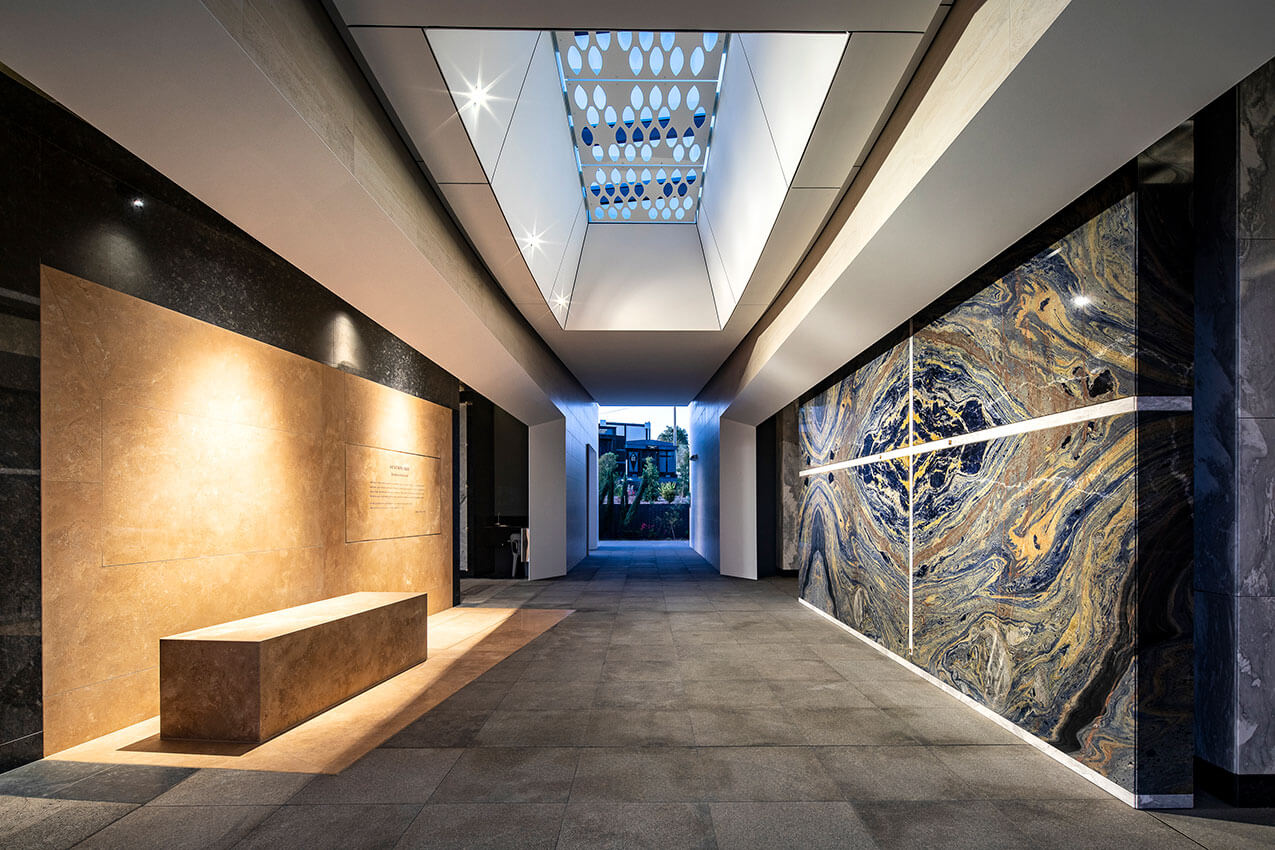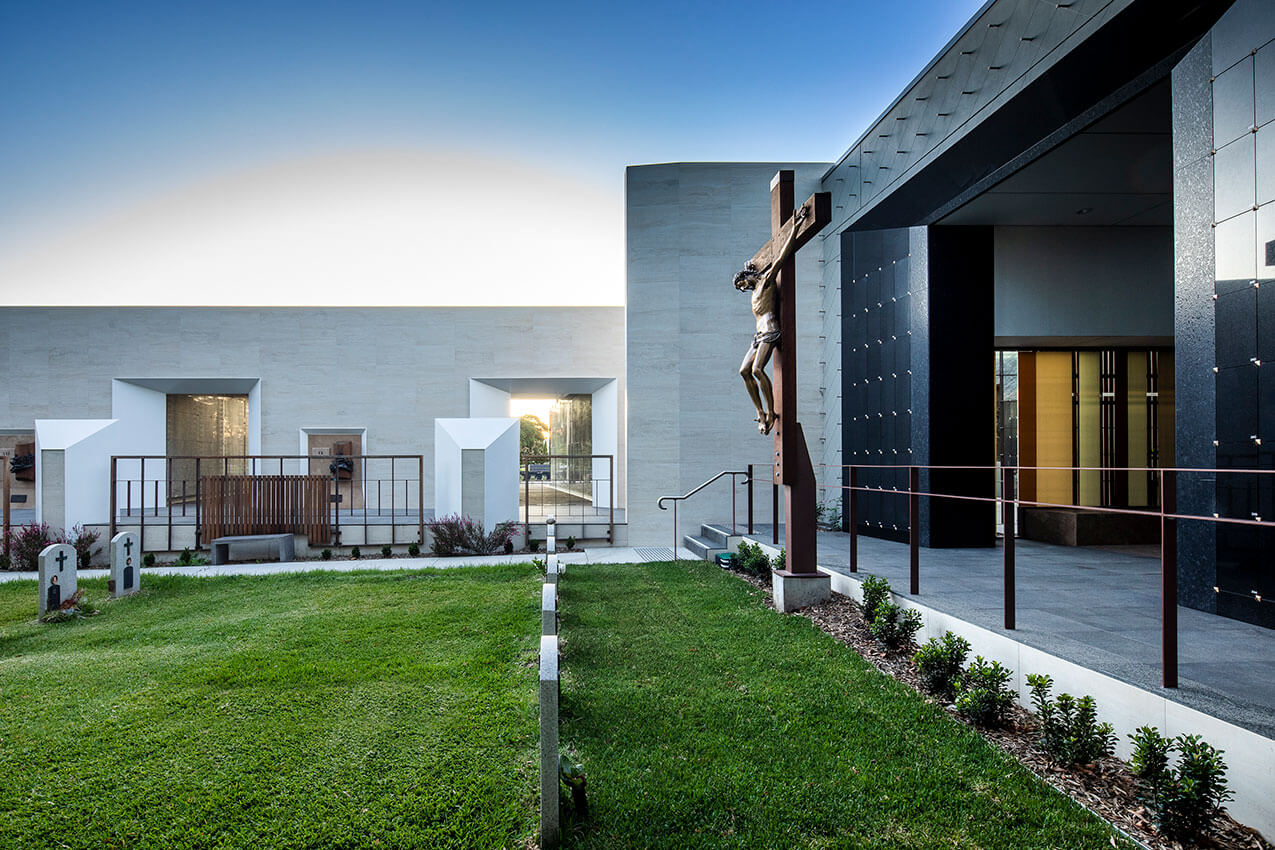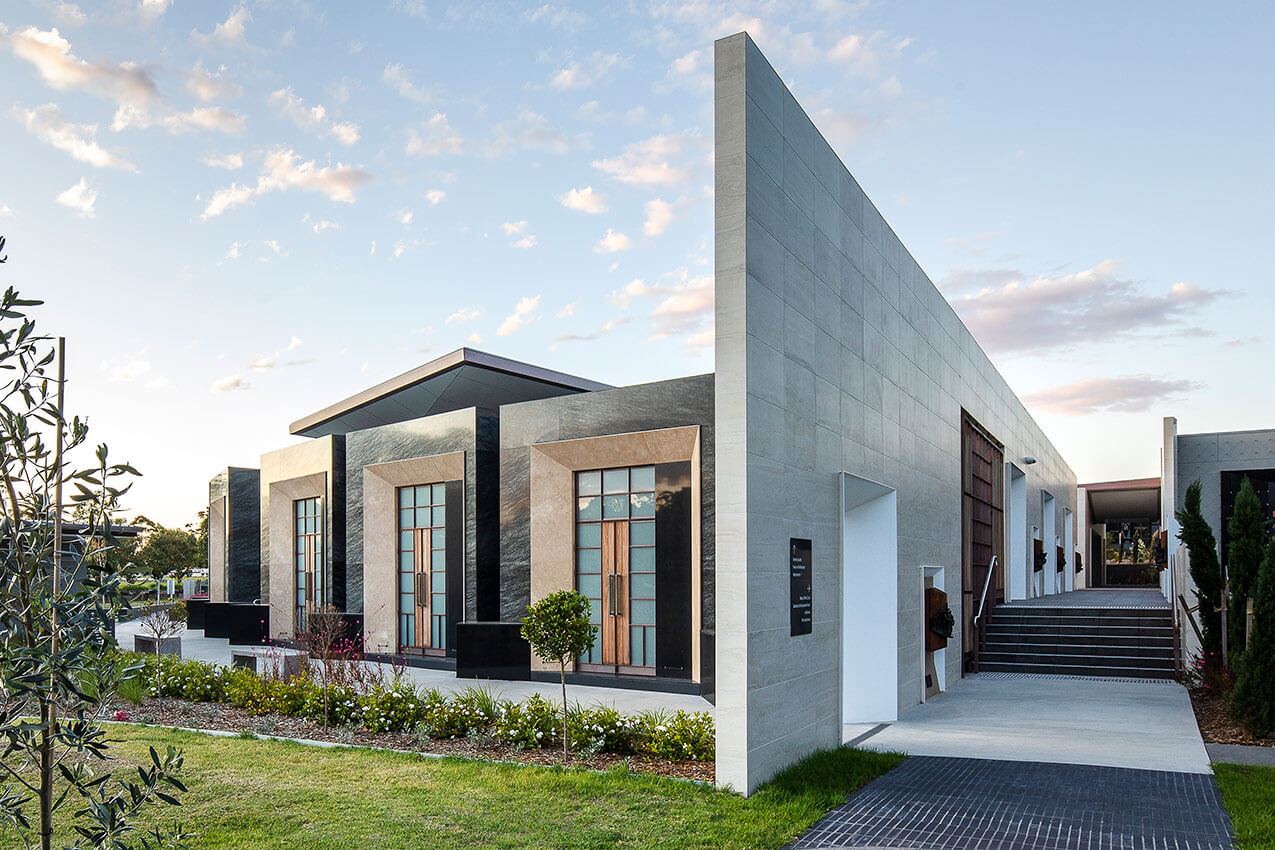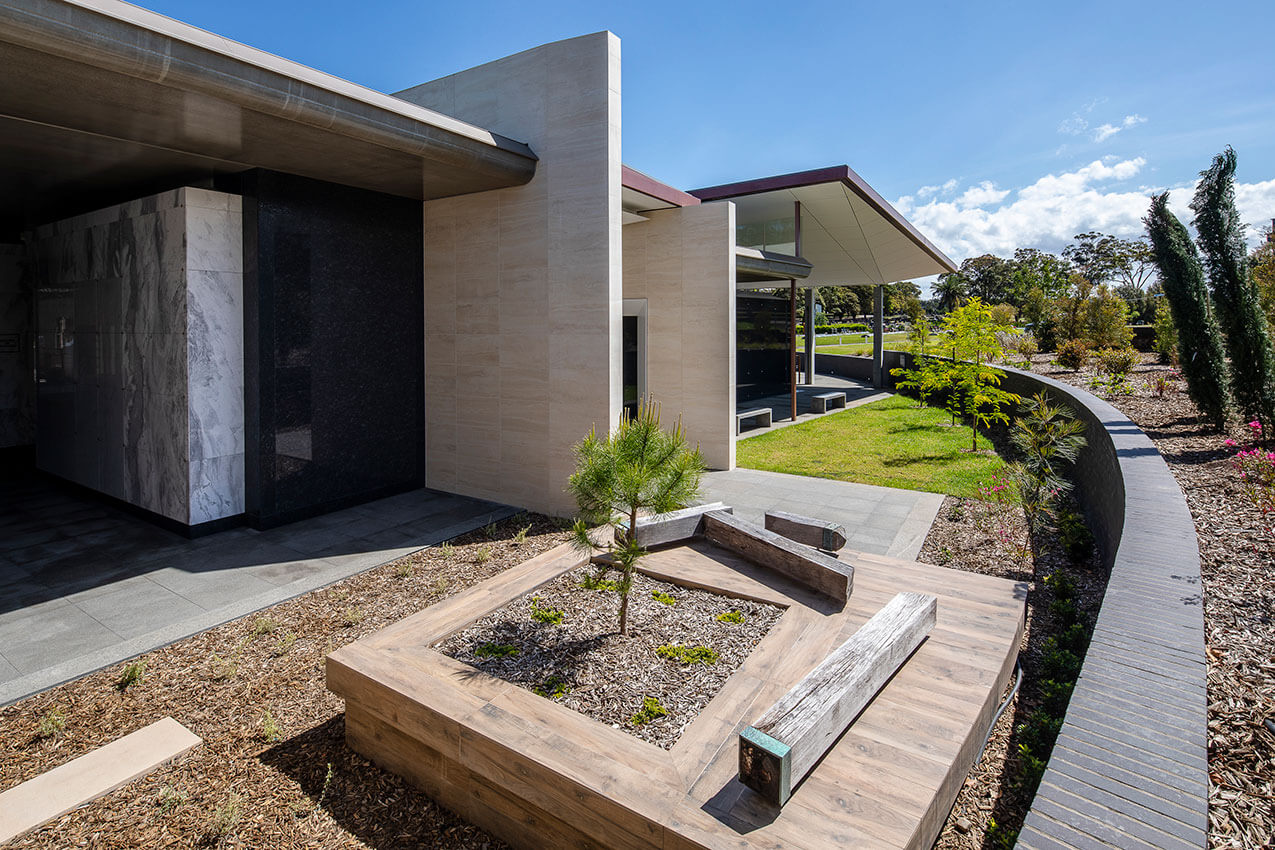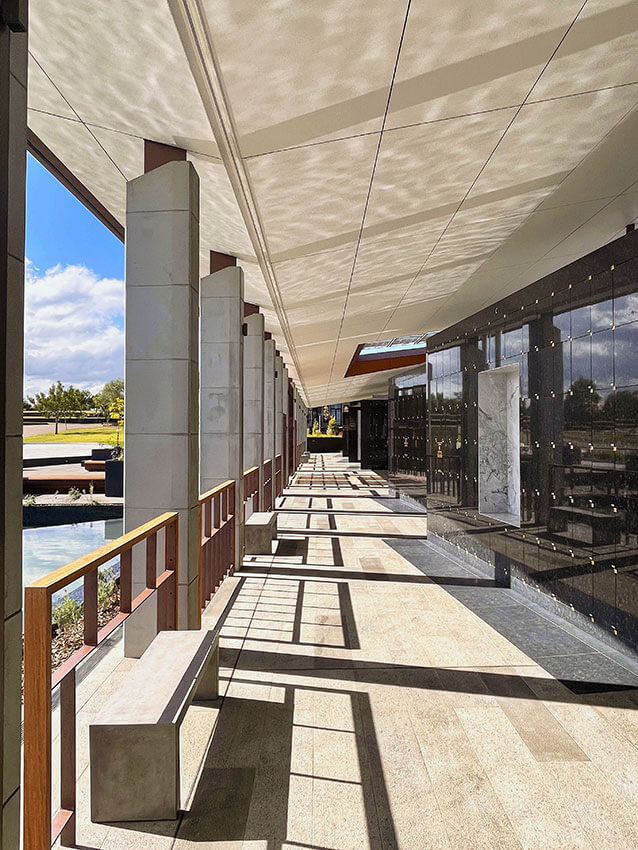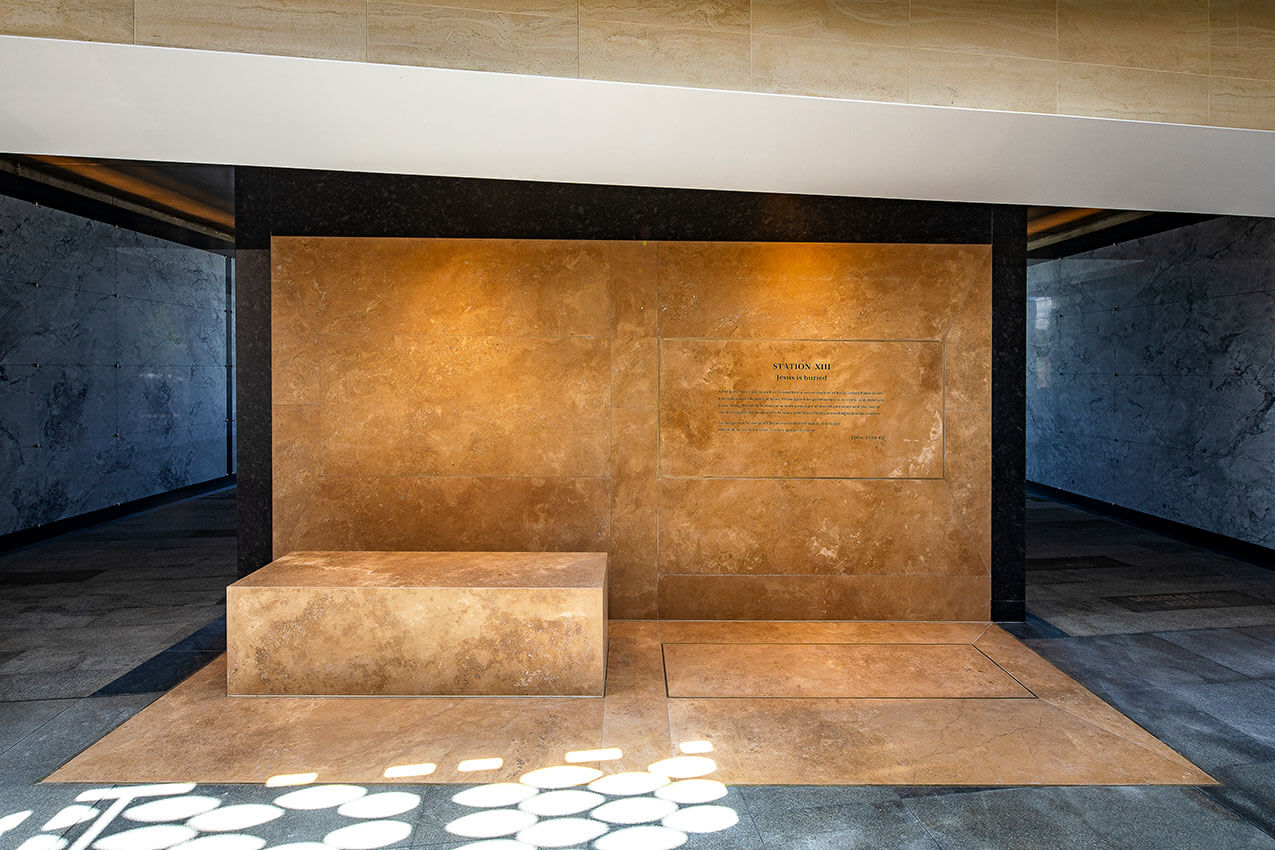Macquarie Park Cemetery Mausoleum of the Holy Way | Gardner Wetherill & Associates (GW.)
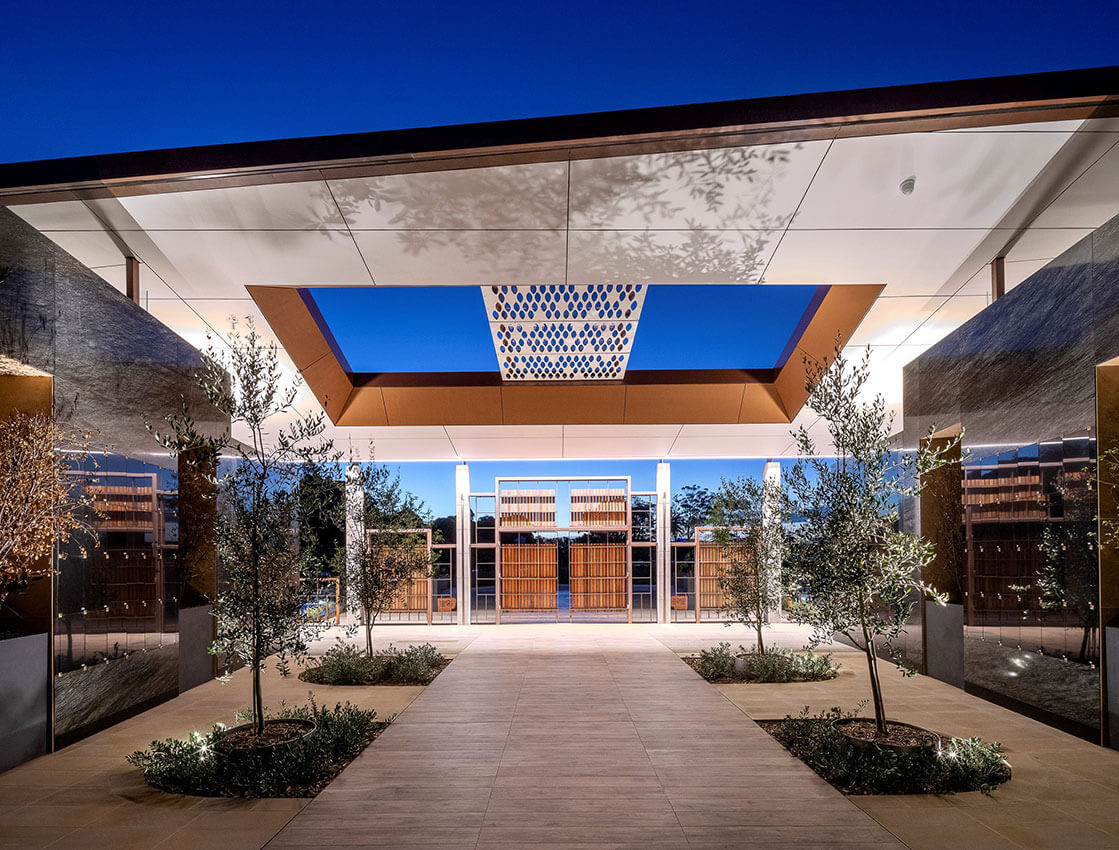
2023 National Architecture Awards Program
Macquarie Park Cemetery Mausoleum of the Holy Way | Gardner Wetherill & Associates (GW.)
Traditional Land Owners
The Wallumettagal
Year
Chapter
New South Wales
Category
Public Architecture
Builder
Photographer
Murray Harris Photography
Toby Wetherill
Media summary
The Mausoleum of the Holy Way provides the community with a tranquil retreat for mourning; a place of rest and quiet reflection.
The architecture evokes positive memories and sensory well-being, with the familiar sounds of moving water, as well as the visual and aromatic pleasure of landscape.
Lightly resting on a rhythmical structure, an angular skillion roof defines the space. Allowing access to fresh air, shade and dappled light, the structure becomes the transition between public and the sanctuary, where a processional Olive Grove leads your eye to the XII Station of the Cross.
Symbolically, “The Crucifixion” acts as the centre point of the Mausoleum design, intersected by the Stations of the Cross Walk, which joins all the elements of the composition in a connective dialogue.
As you move through the radiating crypts and columbaria, the palette of rich natural materials, textures and colours thoughtfully acknowledge both harmony and sorrow.
In 2012, Northern Cemeteries appointed GW. to develop design philosophies and concepts for Macquarie Park Cemetery that refresh and transform the physical environment for our engagement with the community. The Mausoleum of the Holy Way is the latest of seven key architectural projects undertaken with GW.
The vision for the new Mausoleum is unique, innovative, timeless: A ‘shelter’ of quiet reflection linked into the parkland and bushland surrounds with a palette of materials, colours and geometric patterns, that integrate seamlessly into the setting.
It is a delight to walk through this memorial space and feel the sense of tranquillity.
Client perspective
